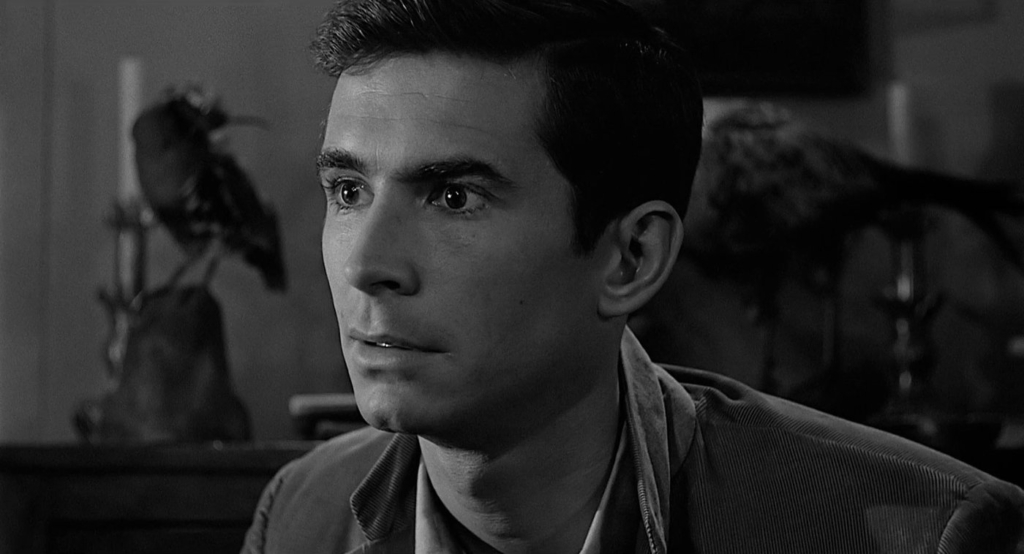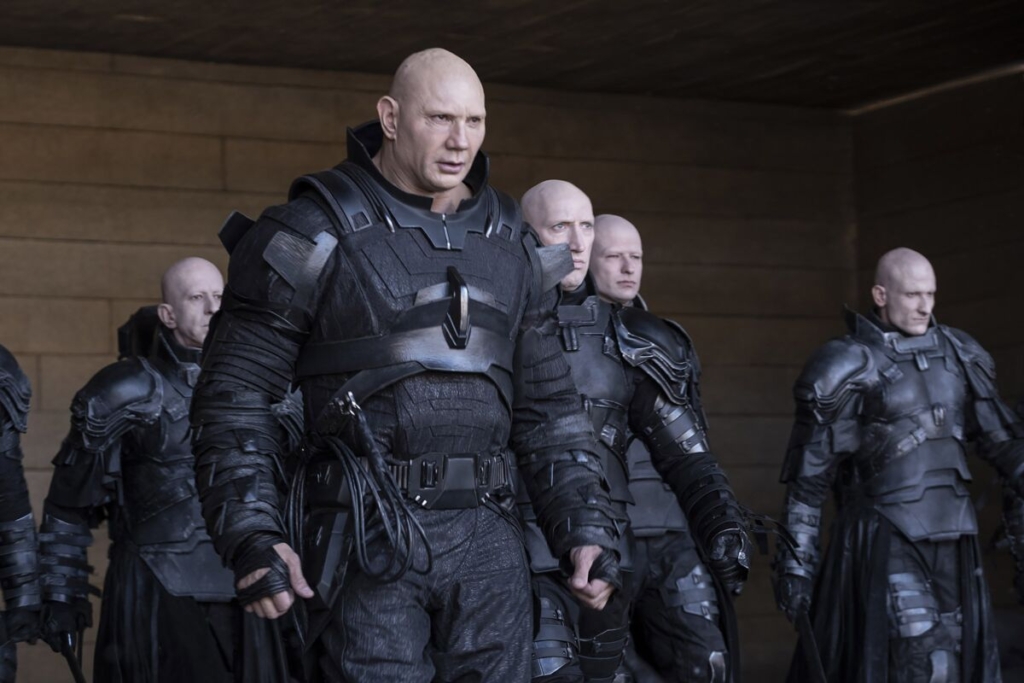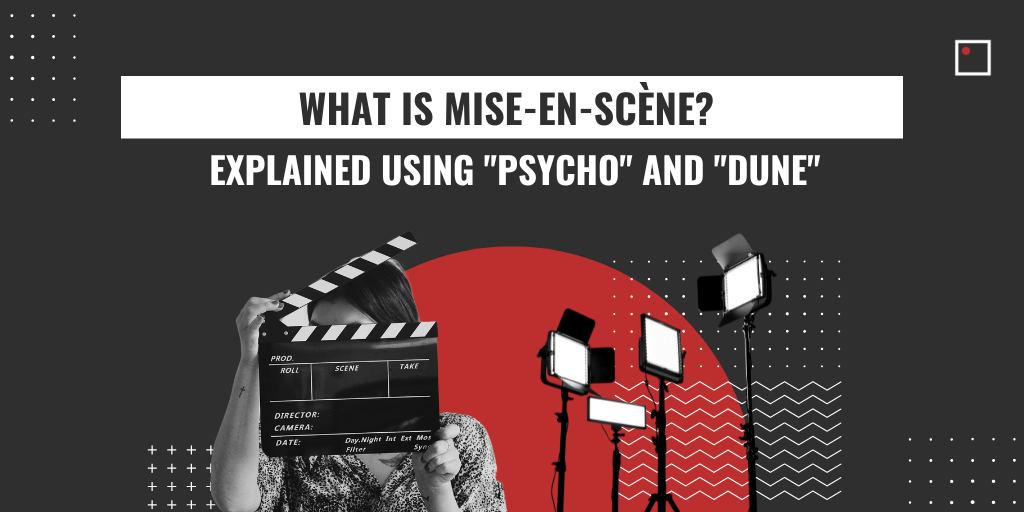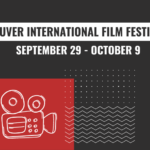What Is Mise-En-Scène? How To Use It In Film
What is mise-en-scène and how do you use it in your films? See how Psycho and Dune expertly use mise-en-scène to develop the overall look and feel of each film.
by Sophia Lin
Have you been wanting to know what is mise-en-scène and how to utilize it? A commonly used film term, on the lips of filmmakers, critics, and audiences alike, is mise-en-scène. You’ve probably heard about how a film has fantastic mise-en-scène or seen the term mixed in with other popular buzzwords like visual storytelling. And if it all seems a little wishy-washy after a while, we’re with you! As it turns out, mise-en-scène is a complex concept with more than a few layers to dig into. In fact, it covers multiple elements of filmmaking.
So let’s get into the nitty-gritty of it all. It’s one thing to grasp the definition of mise-en-scène, but entirely another to use it in your work or build it into your film analysis stratagem. To help you further understand what is mise-en-scène, we’ve included an in-depth analyses of two very different films. See how the iconic Hitchcock film Psycho and the recent Oscar-winning film Dune have both made use of mise-en-scène in some of their most pivotal scenes. How does mise-en-scène foster symbolism? In what ways do directors use mise-en-scène? And exactly how did it work together with the cinematography?
One of the greatest instruments in a filmmaker’s toolbox is mise-en-scène. We’re here to show you how to use it to its full potential!
What is mise-en-scène?
Getting a good handle on the core definition is always a must. To start, mise-en-scène is a French word, literally translated into “putting on stage”. Appropriately, its definition involves the arrangement of some kind in front of the film camera.
Mise-en-scène is composed of the following four elements:
- Setting
- Staging
- Lighting
- Costumes
Each contains a couple more sub-elements, so to speak. Staging, for instance, encompasses actors’ performances and blocking. But we’ll be breaking all that down soon enough. For now, these four neat terms will make it easy to remember.
1. Setting
The first element to analyze when it comes to understanding what is mise-en-scène is setting. A film’s setting is where the story is set. In the realm of mise-en-scène, it almost always refers to the setting of a specific scene. For example, we would consider the interior of a character’s bedroom in one scene, rather than a broad setting for an entire film, like the city of New York. The setting also always includes any props or set design visible on-screen.
Settings can be used in a variety of symbolic and figurative ways. For one, they can act as an indication of a character’s personality. Or, if the setting undergoes changes as the film progresses, it can be an outward display of a character’s interior development. In more complex cases, settings can reflect a character’s psychology or motives.
How Is The Setting Used In Psycho?

Norman Bates from Psycho
Mise-en-scène is used often in horror films. When we first meet the antagonist Norman Bates from the horror film Psycho, he invites Marion Crane, the female protagonist, into his parlour. At the time, he seems charming and innocent. But look closer — in this scene, Alfred Hitchcock cleverly uses the setting to reflect Norman’s eventual villainy.
One key example is, whenever Norman appears on camera, several taxidermy birds appear behind him. But they aren’t just any birds — they are predatory birds, from owls to eagles, showing Norman’s true nature as a predator preying on innocent victims. On the other hand, Marion is shown on-screen surrounded by small birds, sparrows and such, which points to her fate as the prey of Norman.
2. Staging
As we’ve mentioned, staging refers to a couple extra sub-elements as well:
The first is performance. At the end of the day, the actors are the star of the show. As a result, the specifics of their performance help to make up the mise-en-scène. How are they delivering lines? What is their body language? This goes as far as incorporating the style of the actors’ performances, such as whether it’s naturalistic or theatrical acting.
Second comes blocking, a term that refers to where the actors are physically placed and how they move relative to the camera. For that reason, the camera placement is often considered part of the blocking as well. One intriguing example is that a character moving from left to right past the camera is seen as a symbol of change in a positive direction.
How Is The Staging Used In Dune?

Helicopters from Dune
One of the most visually stunning scenes in Dune is when the protagonist Paul Atreides sees Arrakis, his new home planet, for the first time in a helicopter. Arrakis is known for its precious Spice, and the overhead view of the desert planet serves as an unforgettable introduction. But that isn’t all it is.
During this scene, the blocking is intentional and carefully considered. Paul sits behind the glass window of the chopper, with the camera placed on the other side. This creates the unique effect of the desert reflecting off that glass, making it look like the sand dunes are overlaying or overlapping Paul’s face.
An actor’s face is also a clear symbol of identity. Director Denis Villeneuve uses the blocking to tell us that Arrakis will become a foundational part of Paul’s identity, perhaps even to the point of inseparability.
3. Lighting
A third element to understanding what is mise-en-scène is how the film is lit. Lighting is one of the many parts of filmmaking that we typically don’t notice. Gaffers, who are responsible for the lighting of a scene. You can use lighting to create realism, so the shots appear natural and never tip us off to the fact that it has been fabricated. But because it is fabricated, it leaves many options for how the lighting can be used to enrich a film’s message.
There are two main types of lighting to get to know:
One is low-key lighting, which means the contrast is high, with the dark parts of the shot being very dark and the bright parts very bright. To no surprise, this lighting is favoured in horror, thriller, and noir films for the harsh look it creates.
Another is high-key lighting, which is low contrast with few shadows. There won’t be much of a difference between the darker and lighter parts of the shot. This creates a brighter look overall. In contrast, this lighting is often found in rom-coms and musicals.
How Is The Lighting Used In Psycho?

Norman Bates from Psycho
Remember the scene in the parlour with Norman? Well, turns out the setting isn’t the only noteworthy part. Filmmakers aim for each scene to contain multitudes of meaning, and Hitchcock is no exception. Lighting-wise, Norman is lit from the side in this scene. As a result, this creates shadows on one side of his face but not the other.
This results in a curious two-face effect. With a split down the middle, this lighting technique suggests a light half and a dark half to Norman’s character. Or in other words, a sense of duality. As the film goes on, it becomes clear that Norman is not who he appears to be. (Spoiler alert!) As we come to find out, there are, in fact, two personalities within him. This whole scene also acts as a perfect illustration of how the various pieces of mise-en-scène can work together to send multiple messages within one idea.
4. Costumes
The final piece to understanding what is mise-en-scène to the costuming of the film. This aspect of mise-en-scène refers to anything the actors are wearing, including hair and makeup. Costume designers will spend their time looking over the exact details of outfits, styles, shoes, and accessories that will be true to a character. This will also convey meaning on a second level. As we know, what you wear says a lot about who you are.
Interestingly, costumes can be another way to track a character’s development and their relationship with those around them. The lending of a jacket, for instance, can reveal much about how two characters feel about one another. Beyond that, how costumes are worn is also considered. For example, a disciplined character may have ironed clothes and tied-up shoelaces, while an absent-minded one will wear a half-tucked shirt.
How Are Costumes Used In Dune?

Harkonnen tribe from Dune
Rather than observing a specific scene, costume analysis is often more overarching. Throughout its entirety, Dune is filled with elaborate and ground-breaking sci-fi costuming in nearly every scene. Some costume choices reflect the climate of a particular planet, while others were chosen for reasons of practicality. An example of this is how the stillsuits had to be able to preserve moisture.
A true prime example of costuming being used to the peak of its creative capabilities is the costumes worn by the opposing Harkonnen tribe. Their armour is hard-shell and darkly coloured, with repetitive textures and bands that resemble those of insects. In fact, the costume designer based it specifically on the look of beetles, ants, and spiders.
Wait a second, beetles? If that sounds familiar in any way, it should be — Dune features a one-off scene of Paul simply watching a small black beetle crawl up the sand. Beetles are pests, invading and harming any environment they intrude upon. In this case, the Harkonnen costumes create a parallel, foreshadowing their tribe as the colonizing parasites that will invade Arrakis.
Conclusion
As you’ve seen by now, understanding what is mise-en-scène isn’t a quick and easy task. It’s versatile, subtle, and leans towards the abstract. But once you’ve studied and practiced it, employing it in your film will become second nature. Many refer to it as a language in and of itself – mise-en-scène conveys hidden ideas on another level working together with the dialogue and plot events.
And so, learning a visual language like this takes time, and close film analysis is a must for understanding what is mise-en-scène. With that in mind, there are some famous examples to dig into. Some that come to mind are the use of light in Parasite, the red jacket in Rebel Without A Cause, the blocking in The Shining’s climatic scene, and the googly eyes in Everything Everywhere All At Once.
So get into it! Before you know it, you’ll be watching films in a whole new way, seeing more with every rewatch. And if you’re a filmmaker, you’ll find yourself sprinkling fresh ideas into the mise-en-scène of your own films, making the most of what the art of filmmaking has to offer.
Related Articles:
How To Be A Filmmaker In 6 Steps
Why Should New Directors Make Horror Films?
The Art Of Production Design: Who, Why & How
Cinema Spotlight: 3 Lighting Tips For Film Production School Students
7 Job Roles and Departments In Art Direction
TALK TO A PROGRAM ADVISOR
By submitting this form you are agreeing to be contacted by InFocus Film School. We will never sell or distribute your information, and you may opt-out of receiving emails from us at any time. Read our Privacy Policy here.






